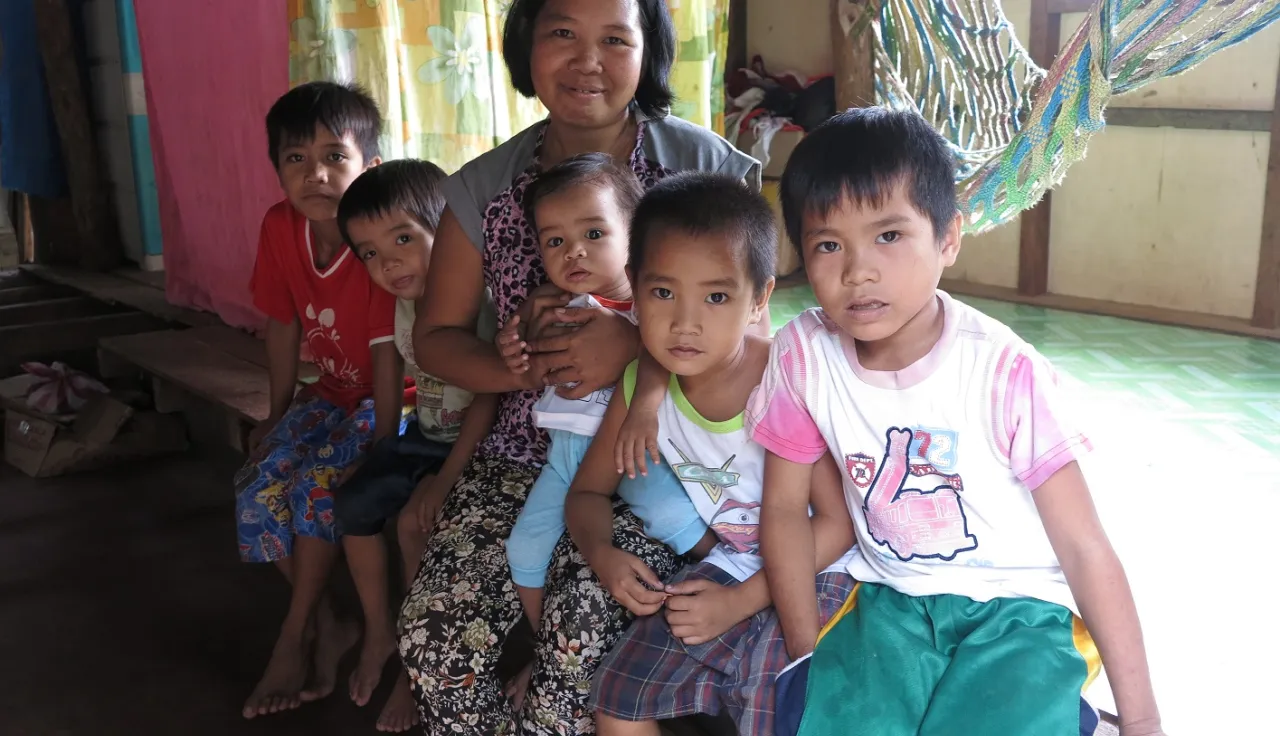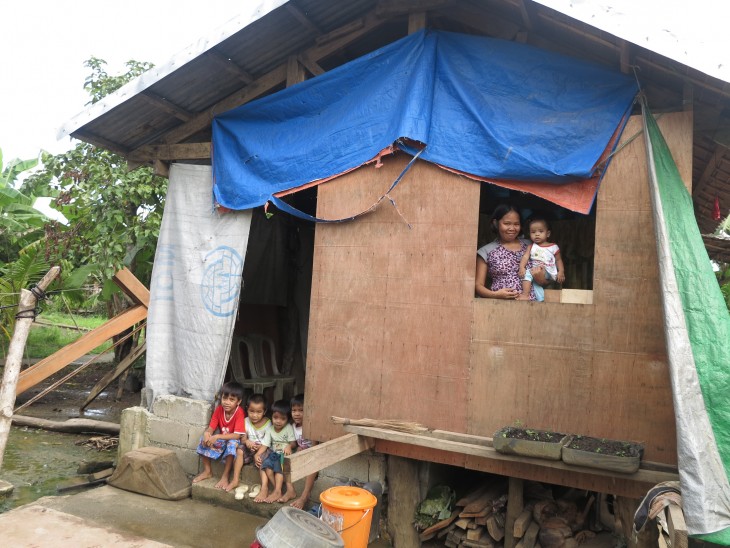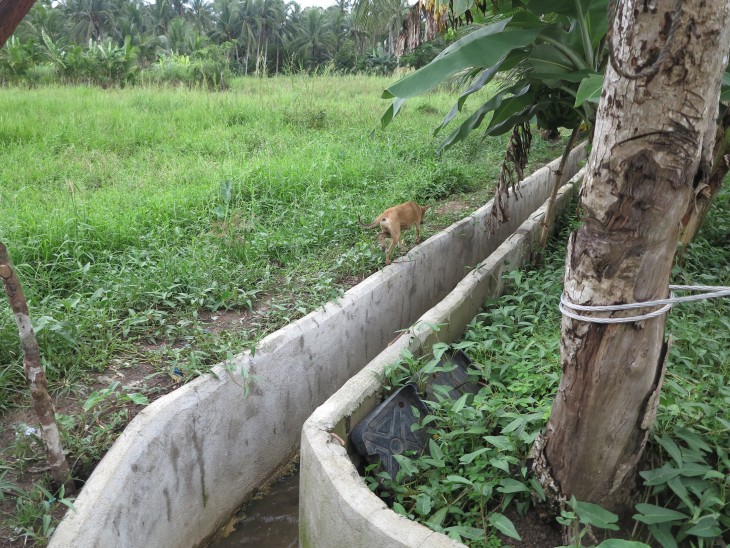Philippines: Finding resilience in Northern Samar a year after Typhoon Melor

Protracted conflict had long affected the communities in Laoang, Northern Samar. Skirmishes between government security forces and the New People's Army had caused short-term but recurrent displacements that disrupted the lives and livelihoods of locals. These communities were made even more vulnerable by the recent onslaught of strong typhoons.
In 2015, Typhoon Melor (local name: Nona) made landfall in Batag, Northern Samar, causing massive destruction in nearby vulnerable communities. Government reports indicate that more than 160,000 families or 730,000 people were evacuated across affected areas in Calabarzon, Bicol, and Central and Eastern Visayas.
Immediately after the typhoon, the International Committee of the Red Cross (ICRC), as part of its role in assisting conflict-affected areas, especially in times of emergencies such as natural disasters, provided the Philippine Red Cross (PRC)-Northern Samar chapter with 2,000 blankets and tarpaulins for 1,000 families. Also in support of the communities' recovery from the typhoon, financial assistance for food, shelter, and livelihoods was distributed to about 10,000 families in Magallanes, Sorsogon and Laoang, Biri, Palapag, Mapanas, and Catubig municipalities.
The Baluyot family was among those affected by Typhoon Nona in a community affected by protracted armed conflict. "I was in the hospital giving birth to my youngest. When we returned, we did not have a house anymore," said Analyn Baluyot. Houses made of light materials were flattened in communities like Bawang and Abaton.
Analyn has six children. Like most men in their community, her husband worked as a laborer for coconut farmers. "He gets paid Php500 or lower for four or five days of labor. But only when there are requests once or twice a month. With our damaged house, we couldn't put up the money for repairs," she explained.
The same was the case for Estrilla Giray, 74, whose family of seven lived in a small nipa hut. "I can't do much outside of the chores here at home. After Typhoon Nona, I would collect slabs of wood to help fix the structure of my home. But with my family out of work, we couldn't afford to have it completely fixed."
Analyn's and Estrilla's families were among the most vulnerable families to receive financial assistance for shelter support from the ICRC.

Estrilla still kept her old house intact and uses it as a storage room. They sleep in the new house because the roofing is better and it is sturdier. CC BY-NC-ND / ICRC / S. BORGUETA
"We were given Php15,000 to buy materials for our house," Analyn shared. The financial aid was also used to purchase good quality lumber and pay for labor. "It was difficult for my children to be in the evacuation center, especially with my newborn. We are very grateful for the assistance that helped us quickly rebuild our home."
She added that her family feels that if not for the assistance, they would probably still be living in a tent.

Analyn said their new house was much better. They used good lumber and cement for foundation. CC BY-NC-ND / ICRC / S. BORGUETA
Estrilla was also able to build a new hut with stronger wood to support it. "It was only my grandson who helped us build this new hut. Without the financial support, it would have been impossible for us to save for it. No leaking ceilings here, not anymore. Thank you," she said.
The ICRC also assessed the needs of the community and consulted local leaders about a cash-for-work program to help residents gain some income and to repair infrastructure in their community.

Estrilla with her granddaughter and great granddaughter inside the new house that they built after Typhoon Melor. CC BY-NC-ND / ICRC / S. BORGUETA
"In several consultations with the community, we agreed that it was the flooding that needed to be addressed," said Mayla Gallego, who worked as barangay (village) secretary for six years.
Even before Typhoon Nona, water would flow from the mountains to the community, inundating houses, because it could not flow through to the river. "The water stayed for two days at most. But if the rain poured continuously, the flood would get even deeper," Mayla said. With the cash-for-work program, residents were able to create waterways that helped ease the problem of flooding.

Newly cemented waterways were constructed through the ICRC cash-for-work program which helped the water flow around the community instead of through it. CC BY-NC-ND / ICRC / S. BORGUETA
"Also, over the years, the river has slowly eaten away the earth that supports the foundation of our school. The typhoon worsened the situation. If not for the erosion-control system that we installed with the help of ICRC, the school would probably be completely eroded, endangering the lives of our young ones," she added.
The ICRC provided the financial support so that the community could rebuild quickly from the typhoon's devastation. As part of their contribution to the recovery efforts, Mayla's community provided cement and other supplies.

Mayla stands in front of the newly cemented erosion control system to protect the school (rightmost) from sliding towards the river. CC BY-NC-ND / ICRC / S. BORGUETA
"We can never be truly ready for another typhoon. Our coconut farmers have a hard time returning to their old livelihoods, especially after the typhoon destroyed the trees," said Mayla. According to assessments of the local government immediately after Typhoon Melor, 90–95 percent of their coconut plantations were damaged, and this was a main source of income in these areas.
For now, the communities of Bawang and Abaton have improved public infrastructure, and, while this can reduce the impact of natural disasters in their areas, these families need more stable sources of income to be able to protect themselves from the harsh effects of disastrous typhoons.



